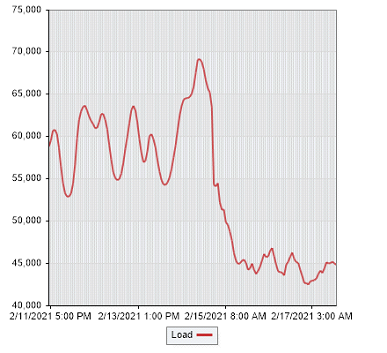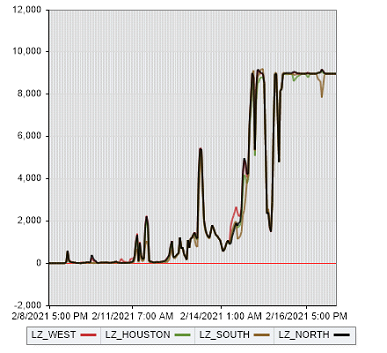|
News
|
LCG, November 6, 2025--X-energy Reactor Company, LLC, (X-energy) and the U.S. Office of Nuclear Energy today announced the start of confirmatory irradiation testing at Idaho National Laboratory (INL) to qualify X-energy’s proprietary TRISO-X fuel pebbles for commercial use in the Xe-100 Small Modular Reactor (SMR). (TRISO stands for TRi-structural ISOtropic). This is the first time that TRISO-X fuel pebbles will undergo irradiation testing in a U.S. lab, which is a critical step in meeting requirements set forth by the U.S. Nuclear Regulatory Commission (NRC) for the commercial deployment of advanced reactors that will use the fuel.
Read more
|
|
LCG, October 28, 2025--NextEra Energy and Google yesterday announced two agreements that will help meet growing electricity demand from artificial intelligence (AI) with clean, reliable, 24/7 nuclear power and strengthen the nation's nuclear leadership. First, Google signed a new, 25-year agreement for power generated at the Duane Arnold Energy Center, Iowa's only nuclear power facility. The 601-MW boiling water reactor unit was shut down in 2020 and is expected to commence operations by the first quarter of 2029, pending regulatory approvals to restart the plant.
Read more
|
|
|
Press Release
Winter Storm Event Decimates Texas Power Supply
____________________
ERCOT Update
February 19, 2021 update-ERCOT will end emergency conditions today
AUSTIN, TX, Feb. 19, 2021 – The Electric Reliability Council of Texas (ERCOT) expects to come out of emergency conditions later this morning.
"There is enough generation on the electric system to allow us to begin to return to more normal operating conditions," said Senior Director of System Operations Dan Woodfin.
____________________
LCG, February 18, 2021-–Extreme winter weather swept across the central and southern states over the week beginning Feb 8, bringing record low temperatures and heavy snow. The temperatures shocked the Texas grid, pushing it to operational limits that ERCOT and generators did not expect and spiking wholesale electricity prices. A combination of higher-than-expected demand and plant and natural gas failures gutted the available power supply. The stark demand- supply imbalance forced rolling black outs, preemptively cutting off electric service to maintain the demand-supply balance so that the whole grid could still limp along.
ERCOT is the most impacted grid as yet. Millions of homes and businesses have been without power for days because of the rolling blackouts, just when people need heat the most. ERCOT is already under fire from the governor for failing to foresee the event.
Nonetheless, ERCOT does take measures to prepare for potential extreme weather. For example, for different time horizons, ERCOT will project and report the peak demand. Generators and load resources need to report to ERCOT on what they have available, and ERCOT is required to maintain a “reserve margin” to buffer the system in emergencies. ERCOT is also required by the Public Utility Commission to publish resource adequacy reports on the capability of existing and planned electric generation resources and load resources to reliably meet to the projected system demand.
This winter storm, however, created circumstances that no one prepared for. On February 11, ERCOT released that it was expecting a record winter time peak load. At that time, the record stood at 65,915 MW, set on Jan. 17, 2018 between 7 and 8 a.m. But things were more severe than expected. As seen in Figure 1, the peak load easily broke the record in the evening of February 14. ERCOT then transitioned to the highest-level emergency (EEA 3) and initiated rolling outages, reducing the load to only about 45 GW.

Figure 1 Actual load in ERCOT, compiled by LCG Consulting
Numerous generators went offline during the event. As of 6 p.m yesterday., approximately 43,000 MW of generation has been forced off the system during this extreme winter weather event. Of that, 26,500 MW is thermal and nearly 17,000 MW is wind and solar. Texas weather does not normally require the same level of winterization as grids and pipelines in its northern neighbors.. The cold froze natural gas pipelines, wind turbines blades and even knocked one nuclear reactor offline. By February 15, nearly 40 percent of the whole system operations capacity was forced offline, approximately 34 GW of generation, mainly natural gas units.
With high demand and short supply, the wholesale price of electricity expectedly soared, from an average of around $20/MWh to $9,000/MWh and stayed, indicating sustained system-wide supply shortage, as seen in Figure 2. $9000/MWh is the system-wide offer cap in ERCOT.

Figure 2 Real-time load zone price in ERCOT, complied by LCG Consulting
Natural gas spot prices shot up as well, as the persistent cold weather made bringing underground gas to the ground difficult. The mid-day price at Houston Ship Channel, normally around $3/MBtu, hit $400/MBtu and remained in that range. The rocketing natural gas price also broke the mechanism of switching from the high system-wide offer cap (HCAP) of $9000/MWh to the low system-wide offer cap (LCAP), which is the greater of $2000/MWh and 50 times the natural gas price index value determined by ERCOT. The Public Utility Commission has ordered ERCOT to not to use the LCAP as it would be even higher than the HCAP because of the abnormally high fuel price. And it would fail to shield the customers from high prices even after a generator revenue threshold has been achieved.
|
|
|
|
UPLAN-NPM
The Locational Marginal Price Model (LMP) Network Power Model
|
|
|
UPLAN-ACE
Day Ahead and Real Time Market Simulation
|
|
|
UPLAN-G
The Gas Procurement and Competitive Analysis System
|
|
|
PLATO
Database of Plants, Loads, Assets, Transmission...
|
|
|
|
|
